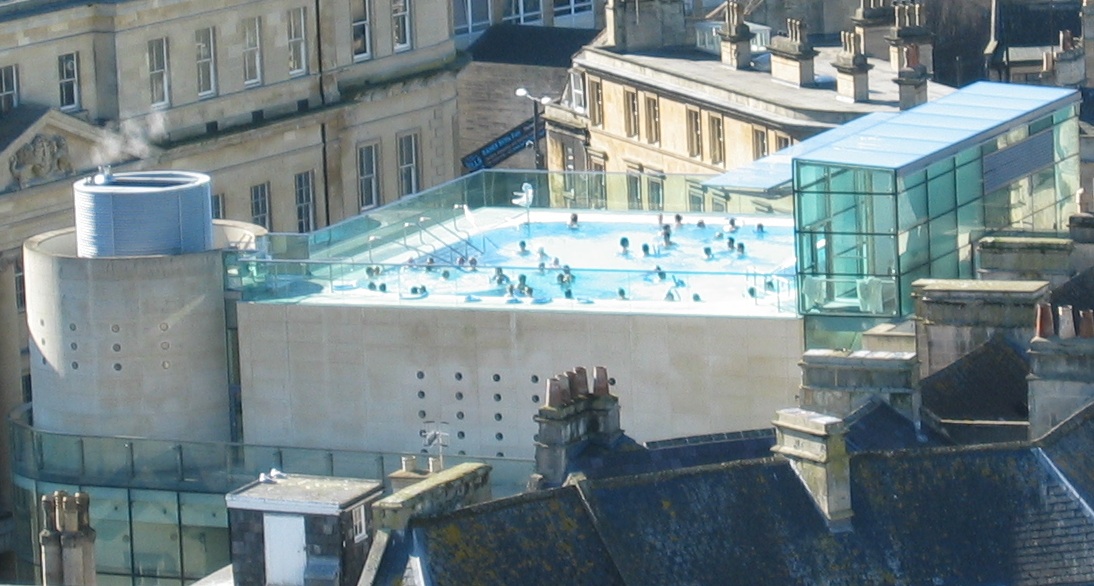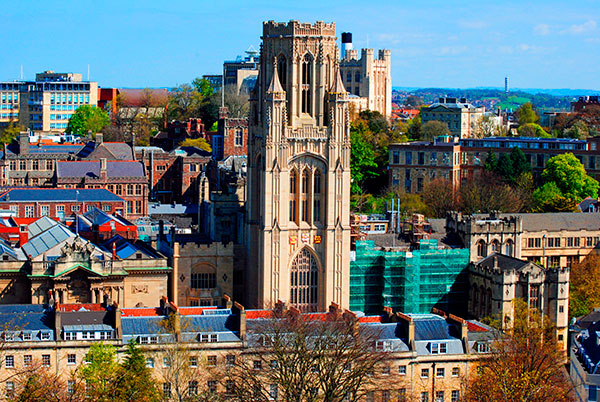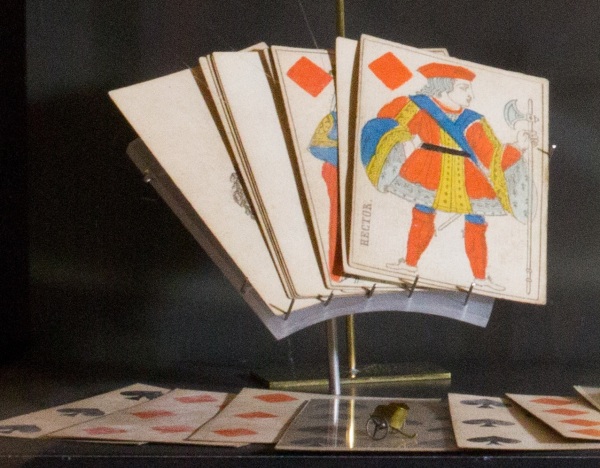A Casino for Bath and Banksy for Bristol
As historians we often consider “complex histories.” We search for stories which have been hidden and interrogate the moments where competing narratives of history meet. On our recent trip to England, we had the opportunity to actually see the intersection of these narratives in the selective cityscapes of Bath and Bristol.
The city of Bath is famous for its layers of historical occupancy. As early as the Romans, occupants recognized the potential healing properties of the natural spring bath water and constructed a pilgrimage destination for those seeking relief. Beneath this modern city of preserved and repurposed Georgian architecture lies rich stories hidden in layers of archeological remains. Meanwhile, the modern buildings constructed for convenience and tourism, such as the new Bath Spa (2006), are built of local materials and reflect the historic Georgian architecture they stand beside. As a result, the spaces retain a sense of visual harmony between the past and present and define Bath’s identity as a layered history of touristic endeavors.

View Down Henrietta Way, Bath, UK. The attentiveness to cityscape through architectural design is clear in this visually harmonious view.

Many of the 18th century, or modern interpretations of 18th century buildings have re-purposed interiors to cater to modern tourists. This particular building likely always would have been a shop of some sort with housing upstairs.
 The Thermae Bath Spa (2006) retains the visual harmony of Bath’s UNESCO World Heritage site while serving modern tourists. It’s architecture is not a copy of Georgian architecture, rather a modern interpretation of Georgian architectural vocabulary, realized in the same basic materials. The large glass spaces not only remind viewers of the Palladian and Neoclassical windows, but quite literally reflect their structures. Image courtesy of Thermae Bath Spa.
The Thermae Bath Spa (2006) retains the visual harmony of Bath’s UNESCO World Heritage site while serving modern tourists. It’s architecture is not a copy of Georgian architecture, rather a modern interpretation of Georgian architectural vocabulary, realized in the same basic materials. The large glass spaces not only remind viewers of the Palladian and Neoclassical windows, but quite literally reflect their structures. Image courtesy of Thermae Bath Spa.
In contrast, the modern identity of nearby Bristol as a center of trade was not established until the medieval era. While Bath seeks to retain its identity as a tourist space from the Romans to the Georgians through the preservation and interpretation of architecture, Bristol finds itself caught between seemingly contradictory layers of problematic history. How should the city retain its medieval architecture amidst 17th century structures constructed by the wealth of the Atlantic Slave trade? What about Bristol’s 1990’s sub-cultural movement? These themes and histories define Bristol’s modern identity that quite literally exists beneath the surface of the city. Here, miles of alleyways and tunnels feature bright paintings, mosaics, and sculpture, yet, their subject matter and messages clearly critique the mainstream narrative above. Where then do street art, graffiti and the world-famous Banksy fit in?

Old Bristol from above, courtesy of City Tourism.
To negotiate the various histories, the Bristol city council has sanctioned certain spaces for street artists to work and restricted other spaces where artists are prohibited from working.. As a result, legal street art has been limited to tunnels, alleys and designated neighborhoods. The material presence of this vivid sub-culture is visually hidden beneath the façade of an approved interpretation of the old city.
Yet it is this tension, the space between permissible and prohibited, by which Bristol’s sub-culture not only defines itself, but exposes the city’s hidden histories. Spartacus, by JPS, was commissioned by the bar on which it is painted, though never officially approved by the city. It lives quite literally, beneath the city council, and it interprets multiple ideas of self, art and history. Among them it recalls Bristol as a hub of the Atlantic Slave Trade. Spartacus, a slave turned gladiator, casts his gaze in the direction of Bristol’s oldest pub, The Hatchet Inn (1606), which was known to be frequented by pirates and merchants. Its presence reflects the deep entanglement between the rise of wealthy Bristol in the 17th century and the slave trade. The subject of the painting as well as its location reminds viewers that the city has always depended on a hidden sub-culture which allowed the mainstream to operate.

“Spartacus” by JPS gazes across the street towards the city’s oldest pub, Hatchet Inn.
Bristol’s regulation of street art has created a cityscape that depicts the confluence of historical narratives and contemporary perspectives. Bath, which has kept its interpretation of historical tourism and Georgian construction central, will contend with its own past in the upcoming year. In 2005, the city council approved the construction of a casino under the condition that it is cased in an approved, modern interpretation of neoclassical architecture constructed from traditional materials. The new casino will certainly reshape visitors’ impressions of Bath’s tourism operations. Yet, historical and archeological research suggests that while Bath was popular for its healing water, industries of pleasure and gambling have operated beneath the surface since Roman occupation. The new casino could provide visual presence of a hidden history, a counter-narrative existing alongside Bath’s traditional history as a tourist attraction for healing. How will the city of Bath handle this? Will it move forward emphasizing the complex reasons people visited the city? Will the casino’s visual presence interrupt historical memory, or will it’s casing in modern neoclassical architecture act as another 21st century convenience inside the framework of a pre-existing visual narrative?

Playing Cards and Gaming Counters, English, Ca. 1800, Cards, Tortoise shell, Ivory, Collection of the Holburne Museum, Bath, UK. According to the Holburne Museum a visitor to Bath wrote in 1737, “Persons of all characters and denominations sit down to cards from morning to night and night to morning.” Image Courtesy of the Holburne Museum.
 Artist rendition of the new Bath Casino, courtesy of “Bath Chronicle”
Artist rendition of the new Bath Casino, courtesy of “Bath Chronicle”
By: Becca Duffy, WPAMC Class of 2018

Leave a Reply